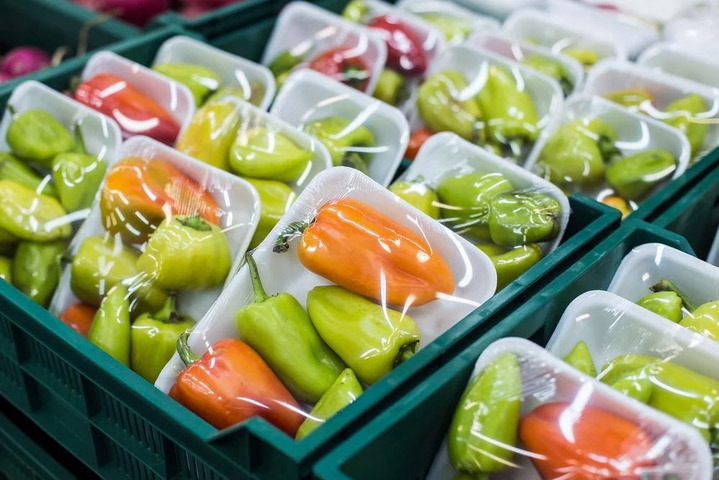
Active and Intelligent Packaging for Reducing Postharvest Losses of Fruits and Vegetables
According to the Food and Agriculture Organization of the United Nations (2009), food production will need to grow by 70% in order to feed the world population that will reach nine billion by 2050.
Agricultural production does not end at harvest, but rather there is a production–consumption continuum, which includes a variety of postharvest activities, including product handling, distribution, and storage. Moreover, both quantitative and qualitative losses occur in horticultural crops between harvest and consumption. Worldwide, about one‐ third of all fruits and vegetables produced are never consumed by humans. It has been estimated that 20–50% of harvested produce is lost on the way from grower to consumer.
Many factors contribute to postharvest losses in fresh fruits and vegetables. Intrinsic biochemical activities in plant tissues (e.g. respiration, ethylene production, and senescence) and extrinsic stressors (e.g. mechanical injury, dehydration, and microbial proliferation) can substantially impact product quality attributes (color, texture, flavor, and nutritive value)
In the industrialized countries, it is estimated that about 20–25% of the harvested fruits and vegetables are decayed by pathogens during postharvest handling.
The rate of deterioration depends on the environmental conditions including temperature, relative humidity (RH), air velocity, and atmospheric composition (oxygen, carbon dioxide, and ethylene concentrations), as well as processing/preservation procedures applied. Understanding the critical factors involved in postharvest deterioration is important in order to apply the appropriate postharvest technologies to delay the deterioration reactions and maintain quality and safety of the commodities Because of health benefits, there has been an increasing demand for fresh fruits and vegetables.
Basically, the difference between the developed and the developing countries is that more of the losses occur between production and retail sites in developing than in developed countries. In least developed countries, postharvest losses can be even higher due to the lack of controlled storage and packaging technologies. In a hungry and increasingly competitive world, reducing postharvest food losses is a major agricultural goal. Reducing postharvest losses will not only add a sizable quantity to the global food supply, but also reduce the need to intensify food production, as well as minimizing the environmental impacts of food production. The right storage conditions can extend the shelf life of fruits and vegetables by 300 – 800%.Active packaging (AP) is, certainly, one of the most important innovations in this field. active packaging (AP) technologies are being developed as a result of these driving forces.
AP is an innovative concept that can be defined as a mode of packaging in which the package, the product, and the environment interact to prolong shelf life or enhance safety or sensory properties, while maintaining the quality of the product. This is particularly important in the area of fresh and extended shelf-life foods as originally described by Labuza and Breene. Other terms coined to denote such packaging include “smart”, “functional” and “freshness preservative packaging”. Various kinds of active substances can now be incorporated into the packaging material to improve its functionality and give it new or extra function.
The respiration of fruits and vegetables is one of the important factors that make up the change. When fruits and vegetables breathe, they consume oxygen and emit carbon dioxide, water and heat, which leads to the decomposition of carbohydrates and other substances that have an important impact on the freshness, taste and health quality of fruits and vegetables.
Major active packaging techniques are concerned with substances that absorb oxygen, ethylene, moisture, carbon dioxide, flavours/odours and those which release carbon dioxide, antimicrobial agents, antioxidants and flavours .Such active packaging technologies are designed to extend the shelf life of foods while maintaining their nutritional quality.
References
- Suppakul, P., Miltz, J., Sonneveld, K. and Bigger, S.W. (2003), “Active packaging technologies with an emphasis on antimicrobial packaging and its applications”, Journal of Food Science, Vol. 68 No. 2, pp. 408-20.
- Brody A.R., E.R. Strupinsky, L.R. Kline (2001) Active Packaging for Food Applications, CRC Press
- Kale V., Jani K., Rangaprasad R. and Vasudeo Y. (2003) Evaluation of performance of additives used in LDDPE films for active packaging applications. Addcon 9th International Plastic Additives and Modifiers Conference
- Prasad P. and Kochhar A. Active Packaging in Food Industry: A Review IOSR Journal of Environmental Science, Toxicology and Food Technology (IOSRJESTFT) Volume 8, Issue 5 Ver. III (May. 2014), PP 01-07 (http://www.iosrjournals.org)
- Rooney ML. 1995. Active packaging in polymer films. In: Rooney ML, editor. Active food packaging. Glasgow: Blackie Academic and Professional. p 74- 110.

